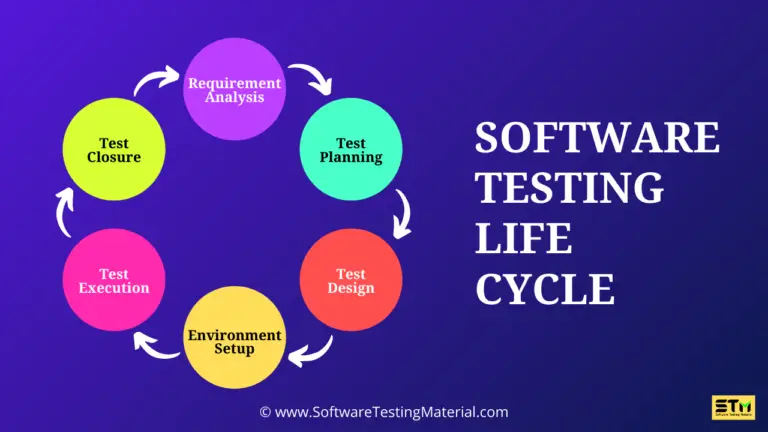Black Box And White Box Testing | Definition And Types
In this post, we discuss Black Box and White Box Testing and types of Black Box and White Box Testing.

What is Black Box Testing?
It is also called as Behavioral/Specification-Based/Input-Output Testing
Black Box Testing is a software testing method in which testers evaluate the functionality of the software under test without looking at the internal code structure. This can be applied to every level of software testing such as Unit, Integration, System, and Acceptance Testing.
Testers create test scenarios/cases based on software requirements and specifications. So it is AKA Specification Based Testing.
The tester performs testing only on the functional part of an application to make sure the behavior of the software is as expected. So it is AKA Behavioral Based Testing.
The tester passes input data to make sure whether the actual output matches the expected output. So it is AKA Input-Output Testing.
Check the below video to see “Black Box And White Box Testing”
Black Box Testing Techniques
#1. Equivalence Partitioning
Equivalence Partitioning is also known as Equivalence Class Partitioning. In equivalence partitioning, inputs to the software or system are divided into groups that are expected to exhibit similar behavior, so they are likely to be proposed in the same way. Hence selecting one input from each group to design the test cases. Click here to see a detailed post on equivalence partitioning.
#2. Boundary Value Analysis
Boundary value analysis (BVA) is based on testing the boundary values of valid and invalid partitions. The Behavior at the edge of each equivalence partition is more likely to be incorrect than the behavior within the partition, so boundaries are an area where testing is likely to yield defects. Click here to see a detailed post on boundary value analysis.
#3. Decision Table
The decision Table is aka Cause-Effect Table. This test technique is appropriate for functionalities which has logical relationships between inputs (if-else logic). In the Decision table technique, we deal with combinations of inputs. To identify the test cases with the decision table, we consider conditions and actions. We take conditions as inputs and actions as outputs. Click here to see a detailed post on the decision table.
#4. State Transition
Using state transition testing, we pick test cases from an application where we need to test different system transitions. We can apply this when an application gives a different output for the same input, depending on what has happened in the earlier state. Click here to see a detailed post on the state transition technique.
#5. Error Guessing
This technique relies on the tester’s experience and intuition to guess the most likely areas where errors could occur. Testers create test cases based on these guesses to target potential weak spots in the software.
#6. All-Pairs Testing
Also known as pairwise testing, this technique checks the interactions between different pairs of input parameters. It minimizes the number of test cases while still covering most of the interactions. Click here to see a detailed post on the Pairwise Testing.
Types of Black Box Testing
#1. Functionality Testing
In simple words, what the system actually does is functional testing
Functional testing includes unit testing, smoke testing, sanity testing, integration testing, and user acceptance testing.
Learn more on Functional testing here
#2. Non-functionality Testing
In simple words, how well the system performs is non-functionality testing
Non-functional testing includes performance testing, load testing, stress testing, volume testing, and security testing.
Learn more on Non-functional testing here
#3. Regression Testing
This ensures that new changes or updates have not broken any existing functionality. It can be applied to both functional and non-functional aspects of the software.
Functional Testing vs Non-Functional Testing
| Functional Testing | Non-functional Testing |
|---|---|
| What the system actually does is functional testing | How well the system performs is non-functionality testing |
| To ensure that your product meets customer and business requirements and doesn’t have any major bugs | To ensure that the product stands up to customer expectations |
| To verify the accuracy of the software against expected output | To verify the behavior of the software at various load conditions |
| It is performed before non-functional testing | It is performed after functional testing |
| Example of functional test case is to verify the login functionality | Example of non-functional test case is to check whether the homepage is loading in less than 2 seconds |
| Testing types are • Unit testing • Smoke testing • User Acceptance • Integration Testing • Regression testing • Localization • Globalization • Interoperability | Testing types are • Performance Testing • Volume Testing • Scalability • Usability Testing • Load Testing • Stress Testing • Compliance Testing • Portability Testing • Disaster Recover Testing |
| It can be performed either manual or automated way | It can be performed efficiently if automated |
What is White Box Testing?
It is also called as Glass Box, Clear Box, Structural Testing.
White Box Testing is based on the application’s internal code structure. In white-box testing, an internal perspective of the system, as well as programming skills, are used to design test cases. This testing usually is done at the unit level.
White Box Testing Techniques
White box testing techniques are methods used to examine and evaluate the internal workings of a software application. Here are some of the key techniques
- Statement Coverage
- Branch Coverage
- Path Coverage
- Control flow Testing
#1. Statement Coverage
It makes sure that each line of source code has been executed and tested.
Statement coverage is a technique where testers ensure that every line of code is executed at least once during the testing process. This helps in identifying parts of the code that were not tested and might contain hidden errors.
#2. Branch Coverage
Branch coverage focuses on testing all the possible branches or outcomes in each decision point, like `if` and `else` statements. The goal is to make sure that every possible path in the decision-making process is tested.
#3. Path Coverage
It ensures that every possible route through a given part of the code is executed and tested.
Path coverage is a technique where testers identify and test all possible paths through the code. This means checking every route that the program can take from start to finish, ensuring comprehensive testing of the software’s flow.
#4. Control Flow Testing
Control flow testing examines how the different parts of the code interact and the order in which they execute. Testers create test cases to cover different paths the application could take, including loops and decision points, ensuring that every possible route has been tested.
By using these white box testing techniques, testers can perform a thorough check of the software’s internal logic, making it robust and reliable.
Difference Between Black Box Testing vs White Box Testing
| Aspect | Black Box Testing | White Box Testing |
|---|---|---|
| Definition | Testing without knowledge of the internal code structure | Testing with knowledge of the internal code structure |
| Alternative Names | Closed Testing | Clear Box Testing |
| Focus | Examines the functionality of the application | Examines the internal workings and code |
| Tester Knowledge | Requires no knowledge of programming or implementation | Requires understanding of internal code and design |
| Done by | Software Testers | Software Developers |
| Programming Knowledge | Not required | Required |
| Code implementation | Not required | Required |
| Targeted Components | Mainly functional testing, user interface, and system behavior | Code logic, structure, and logic paths |
| Techniques Used | Equivalence partitioning, Boundary value analysis, and Error guessing | Control flow testing, Data flow testing and Statement coverage testing. |
| Advantages | Helps identify missing functions, usability issues, and unexpected behavior | Helps optimize code, find hidden errors and bugs early |
| Disadvantages | Limited by lack of internal interaction knowledge | Can be difficult, time-consuming, and requires extensive code knowledge |
| Automation | Generally less prone to automation | More amenable to automation |
| Types of Testing | Types of Black Box Testing: Functional Testing, Non-functional Testing, Regression Testing. | Types of White Box Testing: Unit Testing, Integration Testing, Regression Testing. |
Conclusion
In conclusion, Black Box and White Box Testing are essential methodologies in the realm of software testing, each offering distinct advantages. While Black Box Testing focuses on evaluating the software’s functionality without considering the internal code structure, White Box Testing delves into the internal mechanisms to ensure comprehensive code coverage and flaw detection. Understanding the differences, benefits, and limitations of both testing approaches allows development teams to implement a balanced testing strategy, thereby enhancing the overall quality and reliability of the software. By leveraging both Black Box and White Box Testing, organizations can effectively mitigate risks and ensure a robust software delivery process.
Frequently Asked Questions
When to use black box testing?
Black box testing is used when you need to test the functionality of software without knowing its internal code or workings. It’s best for finding bugs in the user interface, input/output processing, and overall behavior of the system. This type of testing is helpful when you want to ensure the software meets user requirements and specifications.
Is Black Box Testing QA?
Yes, black box testing is a part of Quality Assurance (QA). It helps testers find problems in the software by checking how it works without looking at the code. This way, it ensures the software meets users’ needs and is reliable.
Is Black Box Testing TDD?
No, black box testing is not the same as Test-Driven Development (TDD). In TDD, tests are written before the code is developed, guiding the coding process. Black box testing, on the other hand, focuses on testing the software’s functionality without knowing its internal code. Black Box Testing is BDD and White Box Testing is TDD.
Related links:
- Manual Testing Methods
- Black Box Test Design Techniques | Software Testing Material
- What Is Software Testing – Definition, Types, Methods, Approaches
- TestQuiz
- Equivalence Partitioning Test Case Design Technique








sir, can you explain me ECP, BVA and Decision Table with an example?
Hi Sujot, please check below links
ECP,
BVA,
Decision Table,
State Transition
How many days need to cover testing course ?
Automation is best or manual testing is best ?
In one and half month, we cover both manual and automation.. Eventhough you learn automation, you need know manual concepts first. We cover both. Just contact us using registration form.